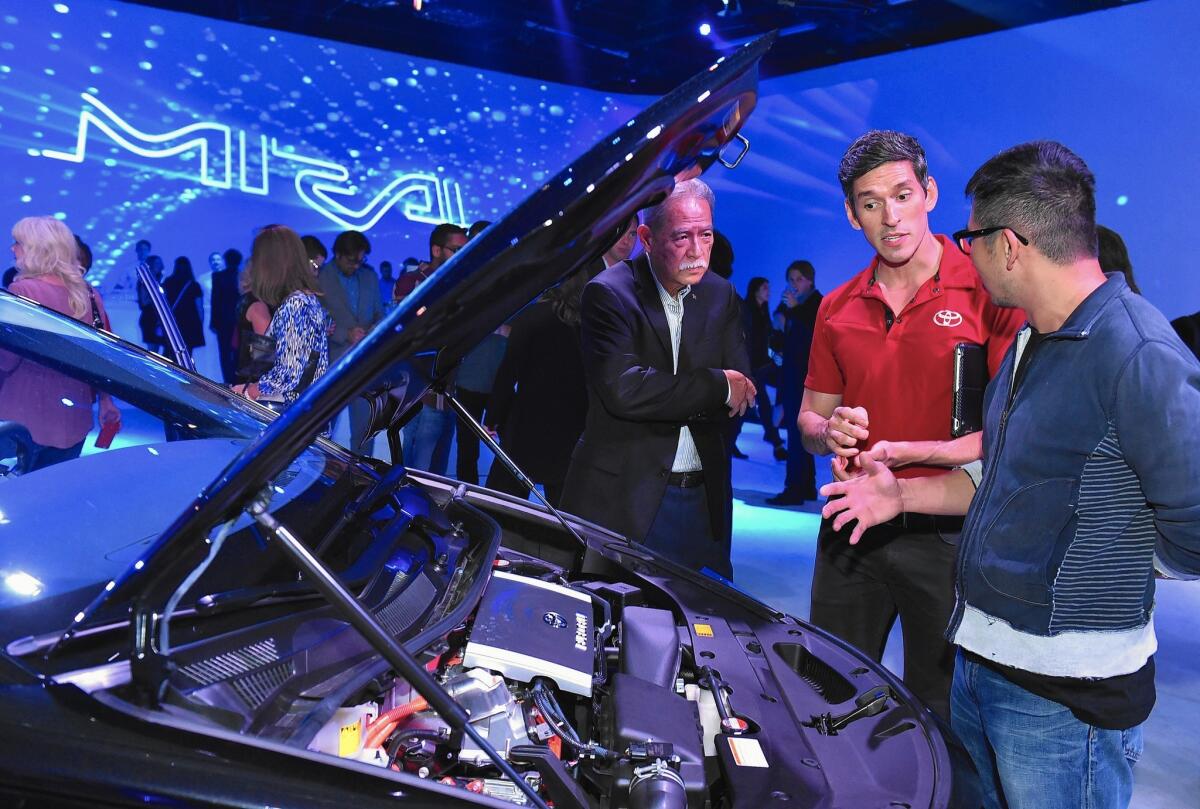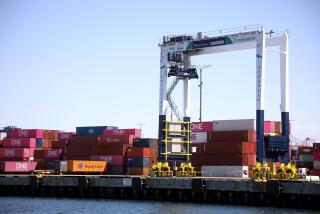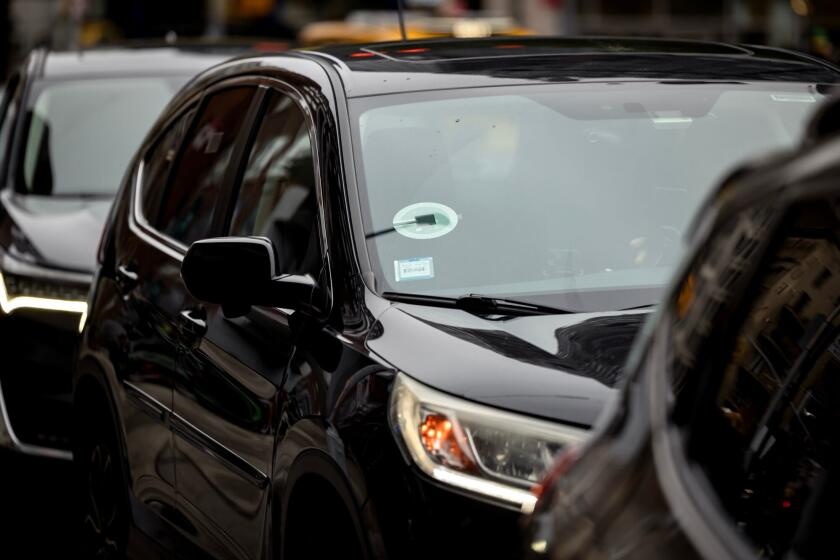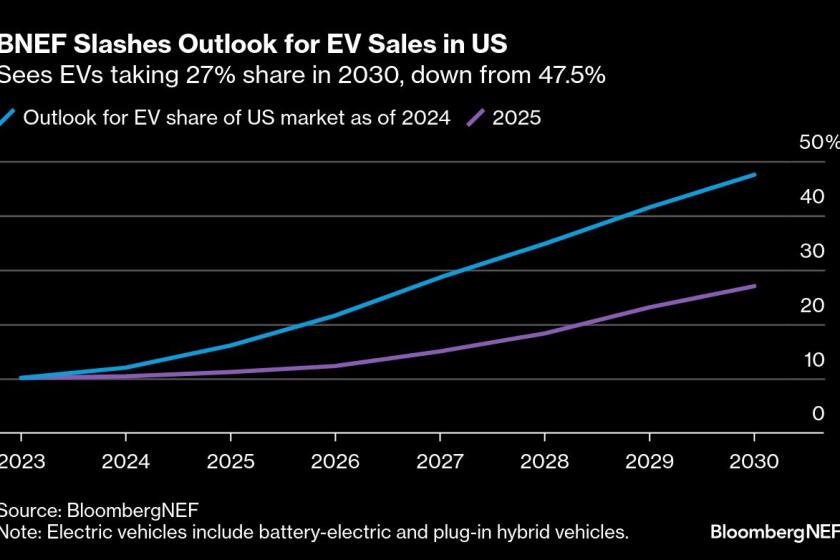Fuel cell cars and filling stations are slow to arrive

- Share via
Several years after automotive experts began predicting hydrogen fuel cell technology would be the powertrain of the future, the future still isn’t here.
Car companies are building, leasing and even selling fuel cell cars. Hydrogen fuel providers are building filling stations. But both sides are moving slowly — caught in a chicken-and-egg dance that is preventing wannabe early adopters from getting into a fuel cell vehicle.
Toyota has already put its new Mirai hydro-car on the road. It joins the Hyundai Tucson, which has been out for more than a year. Coming soon are fuel cell vehicles from Honda, with offerings likely from Mercedes-Benz and GM just over the horizon, and Ford and Nissan following them.
But where will they fuel up? California is by far the country’s most advanced location for hydrogen fuel cell technology, but the infrastructure isn’t ready.
“Obviously we all have to work together, but the stations have to be available before the cars are there,” said Charlie Freese, executive director of fuel cell activities for General Motors.
Despite the dispersal of nearly $100 million in California state incentive funds, spent exclusively on the building of hydrogen filling stations, to date there are only 12 locations statewide that dispense compressed hydrogen gas — and only four of those are “retail” outlets, where a driver can swipe a credit card and fill up, according to Keith Malone, of the nonprofit California Fuel Cell Partnership.
The remainder are stations where consumers who have leased their cars can get filled up using a PIN or code, at a location that otherwise is servicing fleets of buses or trucks. Though the pumping equipment at both kinds of stations may be similar, owners of the new Mirai, for example, cannot fill up at a non-retail station.
The retail stations are located in West Los Angeles, Diamond Bar, San Juan Capistrano and West Sacramento. Others are expected soon along the 5 freeway, one near Irvine, one near Coalinga.
That’s far fewer than government and private sector experts had predicted. Last year at this time, they said at least 40 stations would be operating by the end of 2015. Today, the same private and public sector representatives make similar predictions.
Linda Rapattoni, spokesperson for the California Energy Commission, said her agency is predicting 50 stations will be open by the end of 2016.
But station operators, even those who are receiving assistance from the California Energy Commission and other government agencies, say those stations won’t have enough customers to keep them open.
“We might have 50 or 60 stations, and still be under 500 cars — in all of California!” said independent hydrogen fuel station builder Dan Poppe, who said he is filling 11 to 13 cars a day. “How can a station operator make it, or attract investors, if the cars aren’t going to be here?”
Much stands in the way of the public embracing the well-regarded technology. Among other things, the cars are expensive. Even with subsidies similar to those available to buyers and lessees of battery electric vehicles like the Tesla Model S, the manufacturer’s suggested retail prices are high. A new Toyota Mirai costs about $58,000, before subsidies and government givebacks.
Both sides agree the infrastructure problems are complex. Unlike gasoline, hydrogen fuel has to be chilled to a low temperature, and kept there, before it can be correctly disbursed. Temperature variations contribute to the difficulty of ensuring a vehicle is actually “full,” and make it hard to be sure a customer is being charged the right amount for fuel.
Indeed, at this time last year the California State Weights and Measures division did not have a protocol in place for approving dispensers — an approval that retail stations are now obliged to obtain, and to display on their pumps, just like gas station operators. The first retail dispensing pumps were approved in January.
For many hydrogen fuel cell vehicle owners, the fueling costs are minimal, or even moot. Consumers who buy or lease a Toyota Mirai get a fuel credit good for $15,000 or three years, whichever comes first. The $499-a-month lease on a Hyundai Tucson includes fuel, which drivers obtain by visiting an approved station and using a PIN code to dispense hydrogen.
“We provide a code, and it’s billed to us,” said Hyundai spokesperson Derek Joyce. “The customer never sees a bill.”
Despite the delays and fears, car makers are moving forward — but cautiously. Hyundai has to date leased only about 400 vehicles worldwide, 85 of them in the U.S., and all of those in California. Toyota is selling and leasing its Mirai, but has put only 30 units on the road since deliveries began in October.
The company hopes to sell or lease about 1,000 Mirais before the end of 2016, and an additional 2,000 within a year after that, said Toyota’s national manager of advanced technology vehicle marketing, Dan Coleman. Almost all of those will be sold in California.
But Toyota is actively discouraging some would-be owners, using a vetting process to eliminate candidates who don’t fit a geographic profile.
“We are trying to prevent people from buying a car if they’re not close to a station,” said Toyota’s national manager of advanced technologies, Craig Scott.
Honda will unveil its new Clarity Fuel Cell sedan at the Los Angeles Auto Show, opening this week, but that vehicle is only available for lease in Japan, with a future U.S. rollout at some unnamed future date.
Mercedes-Benz says it will have a new hydrogen fuel cell vehicle — probably a crossover or SUV — on the market in 2017. GM and Honda are working together to develop a new hydrogen powertrain that could be in some American cars, but not until 2020.
Those who worry that the slow arrival of stations implies a lack of U.S. enthusiasm for the technology are urged to look to Japan. Toyota’s Scott said there were to have been 80 filling stations built in Japan by now, according to earlier predictions. There are only 20.
“This is a huge shift, a paradigm shift,” Scott said. “It’s going to take a lot of time, and effort.”
ALSO
Brussels under serious terrorism threat after Paris attacks
Divisions emerge on campuses as some criticize activists’ tactics
Massive El Niño gains strength, likely to drench key California drought zone







